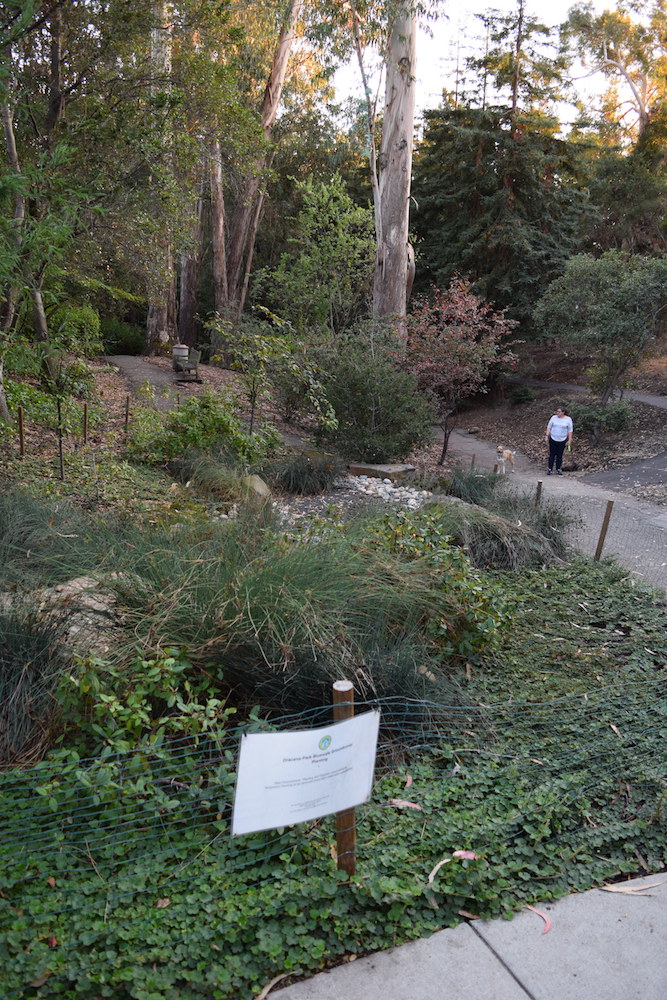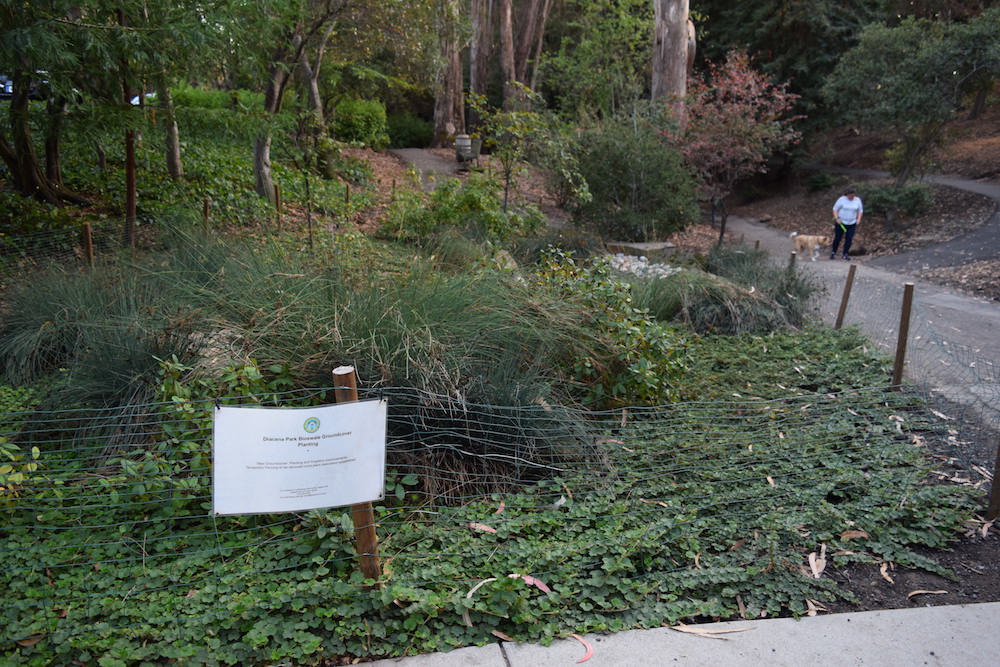Saying both they and other Piedmont residents should have a chance to review and comment on a proposed Green Infrastructure Plan, the City Council on Monday voted unanimously to give the city’s Park Commission a chance to review that proposed plan before any council vote is taken.
The Park Commission typically meets the first Wednesday of each month, which would make the next scheduled meeting Oct. 2.
The proposed plan’s purpose will be to enable sending cleaner storm runoff water to Lake Merritt and, ultimately, to San Francisco Bay. A key element there is “bay-friendly” landscaping, which promotes native plants with minimal demands for water and fertilizers and helps channel and purify water runoff from streets and other non-permeable surfaces.
Council members on Monday said the Park Commission typically reviews projects like this, especially those that are within parks.
“I think it’s ill-advised to move ahead with a project of this scale without asking the (city) commissions to weigh in.”
Vice Mayor Teddy Gray King
Councilman Tim Rood also said he favors the Park Commission, and/or the city’s Capital Improvement Projects panel, having a first look at the plan. He also said the council members didn’t have a chance themselves to look at most of the proposed projects until Monday night.
Former Piedmont Planning Commissioner Michael Henn weighed in, too, saying he favors more public input on any project list.
The Green Infrastructure Plan has been in the formative stages since July 2017, with city staff collaborating with consulting firms Nichols Consulting Engineers and Coastland Engineers, and with the Alameda Countywide Clean Water Program.
The Municipal Regional Stormwater Permit, adopted by the San Francisco Bay Regional Quality Control Board in November 2015, requires Piedmont and other cities to develop their own Green Infrastructure Frameworks. Piedmont’s Green Infrastructure Plan has been conceived to allow Piedmont’s green improvements to be consistent with the Municipal Regional Stormwater Permit requirements.
A key element to Green Infrastructure Plans in Piedmont and other cities is to serve as a measuring and reporting tool for minimizing the amounts of mercury and polychlorinated biphenyls (PCBs) in storm runoff from cities.
The plan’s goals are:
- To guide the identification, prioritization, implementation, tracking and reporting of green infrastructure projects in Piedmont;
- To set targets for reducing negative water quality impacts of city water runoff that ends up in San Francisco Bay; and
- To identify places where “green” infrastructure can replace impervious surfaces that allow runoff water to more readily absorb harmful materials like mercury and polychlorinated biphenyls (PCBs), with progress benchmark years 2020, 2030 and 2040.
Most of Piedmont is in the Lake Merritt watershed; Piedmont is about a quarter of that watershed. Lake Merritt discharges to the Oakland Estuary, and from there to San Francisco Bay.

Piedmont now has three “bioswale” areas — channels designed to concentrate and convey stormwater runoff while removing debris and pollution. One is Dracena Quarry Park, with several such areas, another is at the intersection of Kingston and Linda Avenues, and the other is at the intersection of Ronada and Ramona Avenues.
The first new one as outlined in the proposed Green Infrastructure Plan will be at the “Lower Grand Triangle” at Grand Avenue at Holly Place. Nancy Kent, Piedmont’s parks and project manager, told the council Monday that project is set to be done in 2020, even though funding for it has not yet been identified.
Councilwoman Betsy Smegal Andersen said, “I’m also concerned we’re setting a prioritization list without knowing how much it would cost.” Mayor Robert McBain said those numbers would be weighed in the future, as each project comes closer to approval.
Piedmont city staff had originally planned to submit the city’s Stormwater Annual Report by Sept. 30. But Kent told the council the city could submit a progress report by that date and submit a more complete report after further review and scrutiny.
Kent noted that the various projects that would be in this plan are limited to those on public property, like parks and some street intersections. Councilwoman Jen Cavanaugh suggested Piedmont’s plan could also include incentives to encourage residents to develop bioswales on their private property.
All photos by Sam Richards. Reach Sam at samrichards4344@gmail.com

Where is the list of these 230 State-identified sites– can they be found online? I’m wondering how Dracena’s project was designated as a ‘bioswale’ when it achieves neither of the objectives which define a bioswale? I agree with former Councilmember Keating and Councilmember Andersen that it would be helpful to pencil out cost estimates as well as assign ‘effectiveness scores’ to project ideas prior to designating individual projects for implementation would be helpful. The ‘effectiveness’ scores could be estimated based on the 2 objectives (or other environmentally meaningful criteria) Mr. Keating mentions above (1. displacing hard-surface areas and 2. diverting stormwater from roadways). I also agree with Councilmember Cavenaugh that incentives for bioswales on private property would be a great idea for a pilot program, as long as they met the same effectiveness criteria and were not ‘bioswale-in-name-only’ like the Dracena project may be. Councilmembers, City staff, and Parks Committee members– thanks for doing the research and analysis and starting the conversation on these important efforts!
A state analysis of piedmont showed 230 “opportunity sites” that could qualify as GI projects. This list has not been made public but should be prior to commission meetings so residents can engage and advocate for projects in their neighborhoods. Many of these GI sites may coincide with the bollard installations showing up around town. Likewise, GI sites may coincide with Pedestrian/Bike improvements that many residents want. These “win-win” opportunities need to be vetted before Council makes a decision. And Councilwoman Andersen makes a good point – these projects can be very expensive.
Bioswales do at least two things – displace hard surface so rainwater percolates to ground and accepts Stormwater from roadways so that water percolates to ground. Ramona/Ronada does both, Kingston does one, Dracena does neither. Bioswales need to be properly located and designed to achieve both and hopefully many of the design professionals in town will assist the city in this effort.